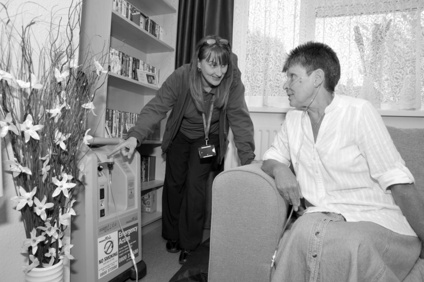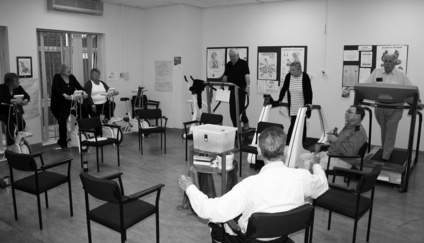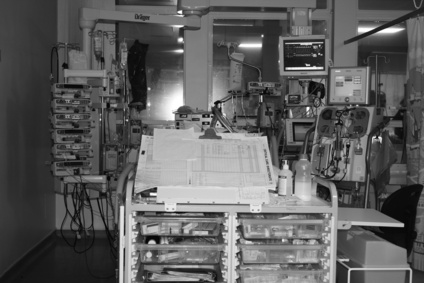Chapter 1 An introduction to cardiorespiratory physiotherapy
respiratory assessment
1.1 The scope of respiratory physiotherapy
Patients with respiratory problems are encountered in many different settings, from long-term care in the community to critically ill patients on an intensive therapy unit (ITU) (also known as critical care) (Figs 1.1–1.3). Respiratory care may be an integral part of the patient’s management in secondary care (hospital) settings, such as respiratory, medical, and surgical and orthopaedic wards as well as burns, care of the elderly, paediatric, neurological, neurosurgical and oncology units. It may also be required for patients with mental health problems or learning disabilities. Physiotherapists work in many of these settings and also within primary care (in the community) for the longer-term rehabilitation of these patients. They may be employed in multiprofessional ‘rapid response’ or ‘early discharge’ teams, in which they share the responsibility for assessing and managing acutely ill patients in their own home.
The case history in Box 1.1 illustrates the scope of respiratory physiotherapy.






